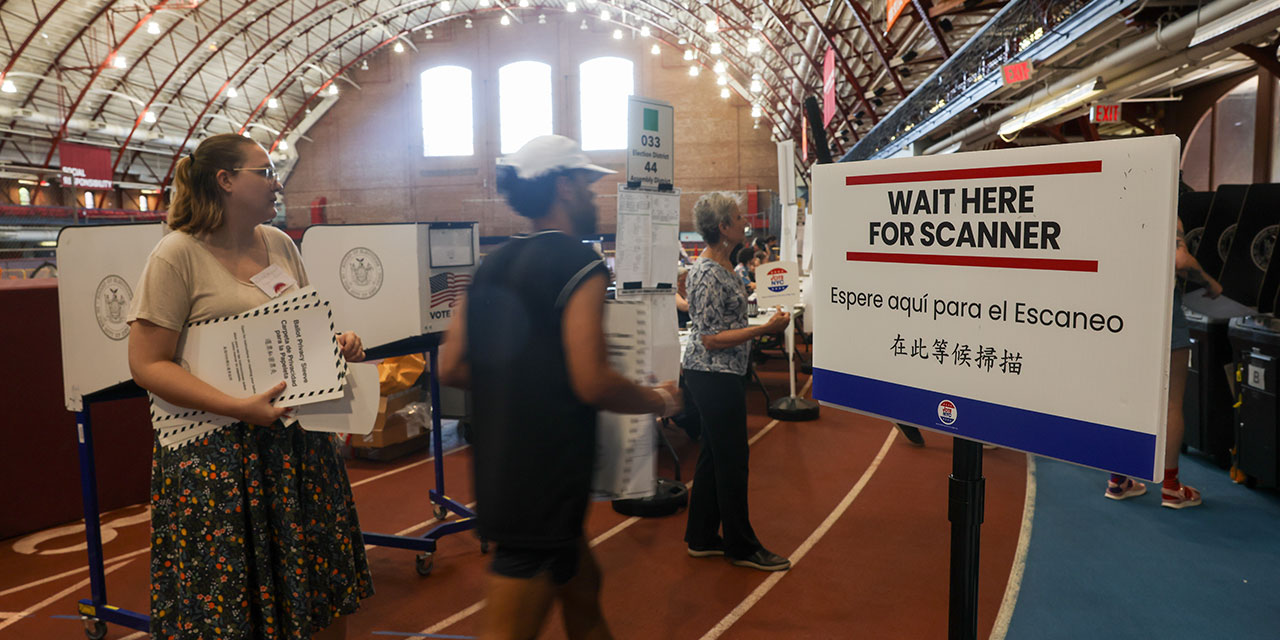Of all the hundreds of cert petitions that have come to the Supreme Court over the summer and are now ready for consideration at the justices’ late-September “long conference,” the biggest involve New York City’s decades-old rent-control regime. Two companion cases, Community Housing Improvement Program v. City of New York and 74 Pinehurst LLC v. State of New York, question the constitutionality of Gotham’s Rent Stabilization Law (RSL). The petitioners argue that the RSL violates the Fifth Amendment’s takings clause by permanently denying the core feature of property rights—the right to exclude others—thus violating the guarantee that private property not be taken for public use without just compensation.
This is no right-wing crusade. The challengers represent and have drawn support from a broad coalition of interest and activist groups. They note that, in addition to depriving landlords of the basic right to choose who lives in their property, the RSL prevents the construction of new housing and leads to the deterioration of existing housing stock. It also stops families from recovering units in their own buildings (from tenants whose leases end, let alone the difficulties in securing mid-lease evictions) and using them to enable multigenerational living.
Finally, a reason to check your email.
Sign up for our free newsletter today.
New York City has maintained a system of rent control since the 1940s. The cornerstone of the modern regime was enacted in 1969 and has been amended many times. The RSL regulates buildings constructed before 1974 that contain six or more units—which currently covers about 1 million units, comprising half of all New York City apartments. The law severely limits landlords’ rights to exclude, occupy, use, change the use of, or dispose of their property. Owners must renew tenants’ leases in perpetuity with few exceptions—and these strong tenants’ rights are heritable, with a “tenant’s family” defined as encompassing grandparents, grandchildren, in-laws, and other extended family. Succession rights are likewise available to people who are in “emotional and financial commitment and interdependence with the tenant.”
The RSL also empowers a group of nine mayoral appointees, the Rent Guidelines Board (RGB), to set annual maximum rent increases. Though the RGB must consider owners’ costs, it also factors in tenants’ ability to pay and faces immense political pressure to limit raises, such that RGB-approved rents routinely lag owners’ costs. This past June, the RGB approved one-year lease increases of 3 percent, far below the 8.1 percent spike in year-over-year operating costs.
In 2019, the state legislature amended the RSL to restrict further property owners’ ability to reclaim rent-stabilized units for personal use, pass on the costs of capital improvements, and remove units from regulation after rents or tenant incomes exceeded an upper limit. Today, despite the existence of a major housing shortage, thousands of apartments sit vacant across New York City because landlords cannot add enough repair costs to rents to justify renovations.
Following that amendment, property owners subject to the RSL filed two suits against the city and state. They alleged that the RSL was an unconstitutional, uncompensated taking. Weighing in their favor was the just-decided Supreme Court case Cedar Point Nursery v. Hassid, which held that a California law granting labor unions a right to access an agricultural employer’s land constituted an automatic (or per se) physical taking, because it deprived property owners of their right to exclude unwanted parties. The plaintiffs contended that the RSL likewise prevents owners from excluding tenants, their relatives, or even emotionally attached roommates.
The district court rejected these claims, granting the city and state’s motions to dismiss both cases. The Second Circuit Court of Appeals affirmed. Thus, the rent-control petitions landed on the Supreme Court’s doorstep.
Beyond the obvious impact on housing policy, these cases promise to remedy the split personality that currently afflicts takings-clause doctrine. When the government permanently and physically occupies property (or authorizes another party to do so), the Supreme Court considers this a per se taking, under a 1982 bright-line rule it established in Loretto v. Teleprompter Manhattan CATV Corp. But when a regulation substantially burdens property rights and diminishes economic value, the Court applies a multifactor balancing test from the 1978 case Penn Central Transportation Co. v. New York City.
Under the Penn Central line of cases, property owners have no recourse for extremely damaging government action, so long as they retain some degree of reasonable use of their property. This standard lacks grounding in constitutional text and history and has proven unworkable in the lower courts. Laws like the RSL that permanently deprive owners of control over who resides on their property should be ruled compensable takings—such that, even if they provide a benefit to the public, individual citizens shouldn’t have to bear their full cost.
As more cities and municipalities experiment with rent controls, it’s crucial that property owners (and would-be owners) know that their property is protected from government appropriations of their core rights. The Court should take this opportunity to provide that guarantee.
Photo by Tom Brenner for The Washington Post via Getty Images




